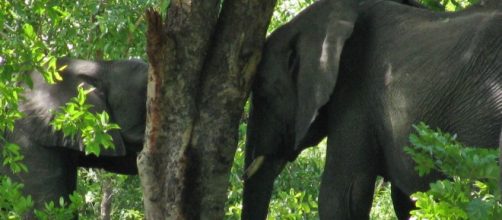The African Elephant Coalition met last week in Cotonou. There were 22 countries represented and three guest states. In their announcement on 4 November, the coalition said that they had resolved to push for allAfrican elephant populations to be listed on the CITES Appendix I.
The delegates agreed that in 1989, the CITES listing of elephants on appendix 1, which banned international trade in ivory, had led to population recovery.
In 1997, CITES introduced a split-listing. This meant that some populations of African elephants retained their endangered status in Appendix I, but the elephants in Botswana, Namibia, South Africa and Zimbabwe, were downlisted to appendix II.
At the time, it was believed that the elephants in these countries were less endangered.
The concept of saving wildlife by applying commercial value to them through hunting is deeply engrained in the psyche of some African nations. Graham Child, the leading conservationist in Rhodesia/Zimbabwe, believed that wildlife was undervalued and that unless landowners were given the right to offer commercial hunting, wildlife populations were doomed.
This was in contrast to Dr. Richard Leakey who said, “Biodiversity cannot be given a price”
The hunting of big game to provide employment and hard cash to communities would, it was argued, ensure the long-term survival of species. This view has long been supported by people who believe that hunting and trade should be allowed to continue.
In their application in 2010 to the CITES consideration of proposals for amendment of appendices I AND II, Tanzania indicated that they had a stable population and said, “Trade in elephant products is essential to the conservation of elephants.”
Since then, Tanzania’s elephant population has crashed significantly. National Geographic reported in June 2015 that the Tanzanian government had announced a fall in 60% of elephants in “the past five years.” Despite figures showing that the country is one of theworld’s biggest source of illegal ivory, the government explained this population drop as being attributed to the elephants migrating to neighboring countries.
The environmental Investigation Agency (EIA) said at the time that they recognize that elephants do migrate but not on this scale. Mary Rice who heads the EIA noted that Tanzania had recognized they have an elephant population crisis. However, she said, "by 2013, despite all its commitments, and despite all the money that's been thrown at Tanzania to assist it in tackling this problem, there had been little positive impact.”
It would seem from Mary’s comments that the decline in Tanzania’s elephant population could stem from corruption.
“We know,” She said, “that there are… powerful people involved in …the ivory trade. And we know that people know who they are.”
Lazaro Nyalandu Tanzania's Minister of Natural Resources and Tourism said in July 2015 that they were "ashamed" of their poaching crisis, but that they were doing as much as possible to curb it. Recently their spectacular arrest of poaching mastermind Boniface Matthew Mariango made world headlines. Following the arrest, Mr. Andrea Crosta of the Elephant Action League said that with the commitment to ban ivory trade by the US and more recently by China, "there is hope for the elephants."
Tanzania has been opposed to trade bans for years and lobbied several times for restrictions to be lifted so they could sell their ivory stocks.
In the past, Tanzania has angered other countries who do support the ban and their absence at Cotonou is an indication that Tanzania is unsupportive of any trade bans despite their decliningelephant population.
Tanzania’s neighbor Kenya came to the party and supported the adoption of the declaration calling for a total ban on ivory trade worldwide.
Most wanted ivory poaching mastermind arrested in Tanzania.
ADDRESSING THE INCOMPREHENSIBLE WILDLIFE-POISONING CRISIS IN AFRICA

